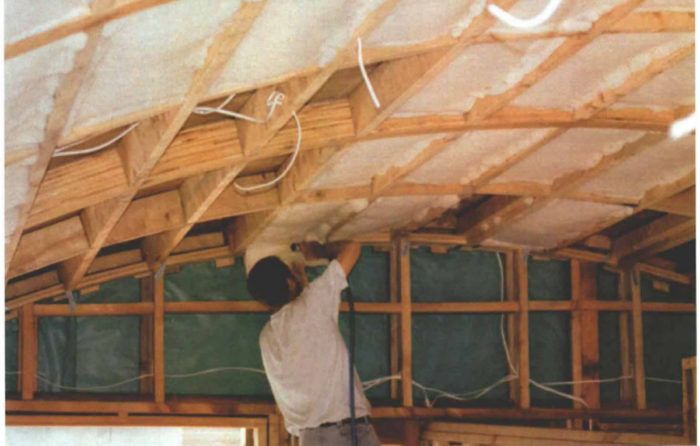Insulation Comes of Age
Thermal insulation is changing for the better, becoming more user-friendly and safer for the environment.

Synopsis: Here’s a thorough discussion of what types of insulation are on the market, including fiberglass, cellulose, plastic foams, even cotton. A comprehensive chart lists R-values, available thicknesses, and resistance to water absorption and damage from sunlight.
It wasn’t a job for the squeamish. Just to squeeze beneath the massive log joists of my old cape, I first had to dig my way through two centuries of bat droppings and crawlspace dirt. Then I had to drag in boards of 2-in. polystyrene, nail them between the joists and seal the polystyrene to the joists with the kind of foam sealant that works only when the can is upside down.
The thought occurred to me — there in the dark dampness, my back on a bed of filth, my face up against the spider webs — that it would be a lot easier just to keep burning cordwood and enduring the cold drafts. I let the thought pass and kept working.
To this day, that insulation project lives vividly in my mind as the worst job I’ve ever undertaken. Yet it was also one of the most satisfying. One day of filthy, cramped labor cut our wood consumption by a third and reduced the home’s 30°F floor-to-ceiling temperature difference to an acceptable 10°F. It also demonstrated to me what a difference insulation can make. In one day I changed the thermal dynamics of the house more dramatically than at any other time in its 200 years. I used the right type of insulation and an understanding of issues such as moisture flow to ensure a continuing long life for the joists and floor of the historic house.
That was a dozen years ago. In the relatively short time since, thermal insulation has changed a lot. Today, those changes are coming fast and being driven by a variety of causes. Health and safety concerns, better understanding of building science, changes in regulations, environmental awareness and economics all contribute to the rapid evolution of the ways we protect our homes from temperature extremes. In the six years since Fine Homebuilding last tackled this broad issue, new materials have become available, and existing products have gone through redesigns.
I’ll walk you through the changes and look at the insulation industry material by material, highlighting what’s new both with markets and with products, and along the way I’ll revisit some old standards.
Fiberglass continues to lead the batt pack
The largest share of the cavity-fill insulation market belongs to fiberglass. Although this insulation material has been around for decades, even fiberglass has had changes recently.
The biggest issue driving change in the fiberglass-insulation industry is concern over health and safety. Although hotly disputed by the fiberglass industry, some researchers claim that breathable glass fibers can cause cancer, which led to a requirement by the federal Occupational Safety and Health Administration (OSHA) that fiberglass and mineral-wool insulation packaging carry warning labels.
Manufacturers found that the best way to prevent fibers from escaping into the air was to contain them. Consequently, all three major manufacturers of fiberglass insulation Owens Corning, Schuller and CertainTeed — addressed the perceived risk by introducing “encapsulated” fiberglass-batt products for the do-it-yourself markets. Batts are wrapped in a perforated polyethylene or, in the case of CertainTeed’s new product, a nonwoven polypropylene fabric.
For more photos and details, click the View PDF button below:
Fine Homebuilding Recommended Products
Fine Homebuilding receives a commission for items purchased through links on this site, including Amazon Associates and other affiliate advertising programs.

Great Stuff Foam Cleaner

Original Speed Square

Get Your House Right: Architectural Elements to Use & Avoid


























